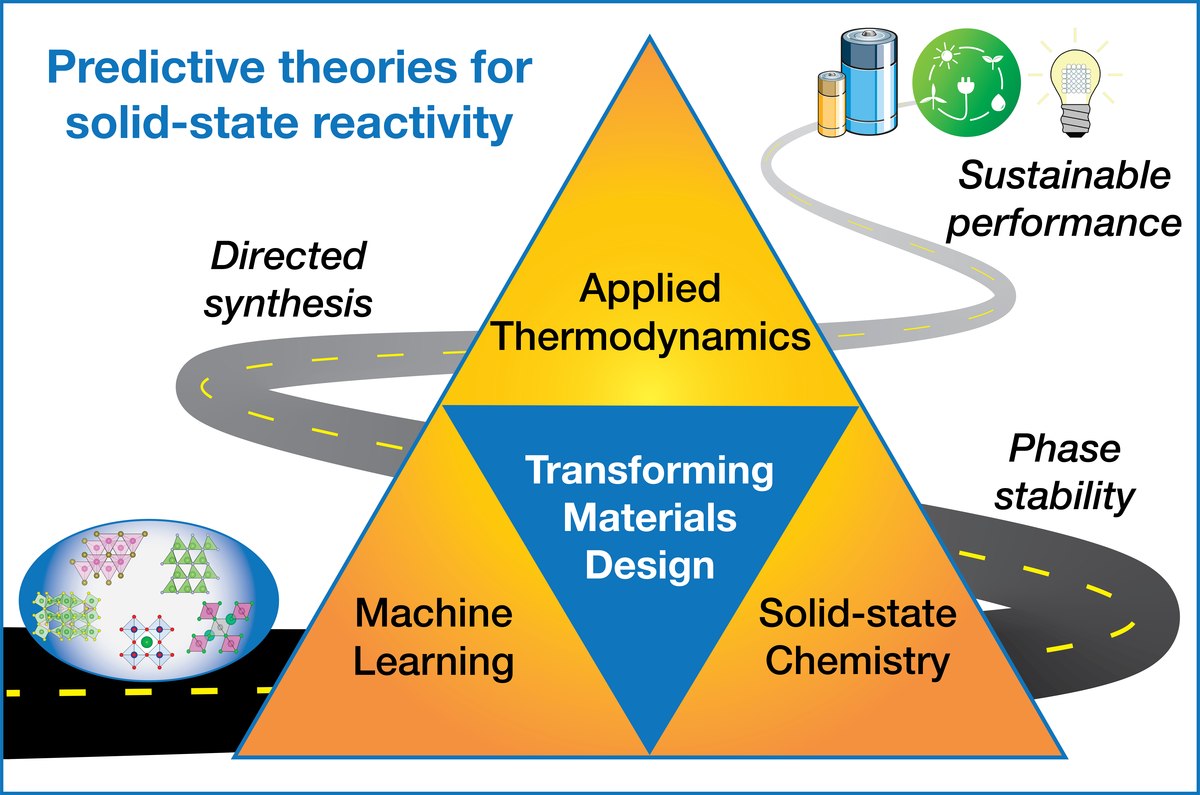
The pursuit of new materials in the solid state has been at the forefront of major technological advancements throughout history. Today, we rely on solid-state materials for electricity, fuels, manufacturing, computing, and countless other applications. The design and discovery of inorganic solids will be at the forefront of developing an energy portfolio that is free of fossil fuels. This transformation will require abrupt and sustained improvements in the efficiency and scalability of batteries, fuel cells, solar absorbers, solid-state lighting, membranes, electronics, and catalysts, all of which are hindered by materials bottlenecks.
The combinatorics of solid-state inorganic materials present a remarkable opportunity for the discovery of new compounds but a daunting challenge for doing so efficiently. These materials make use of the entirety of the periodic table and can manifest in thousands of unique compositions and structures, leading to billions of plausible hypothetical materials.
Our group uses density functional theory (DFT) calculations to calculate the thermodynamic, electronic, and chemical properties of inorganic solids from first principles, allowing us to understand the properties of hypothetical materials without having to embark on risky exploratory synthesis in the lab. Machine learning algorithms are used in concert with DFT to learn from the data we generate and accelerate our searches for new materials with exciting properties. We are particularly interested in predicting how materials interconvert between one another during synthesis and once they are in devices as this will drastically accelerate the timeline from (computational) materials discovery to implementation in a technologically relevant device.
We work closely with experimental groups in CEMS and in research groups at universities, companies, and national labs around the world to inform and test our predictions and bridge the gap between computational models and real systems.